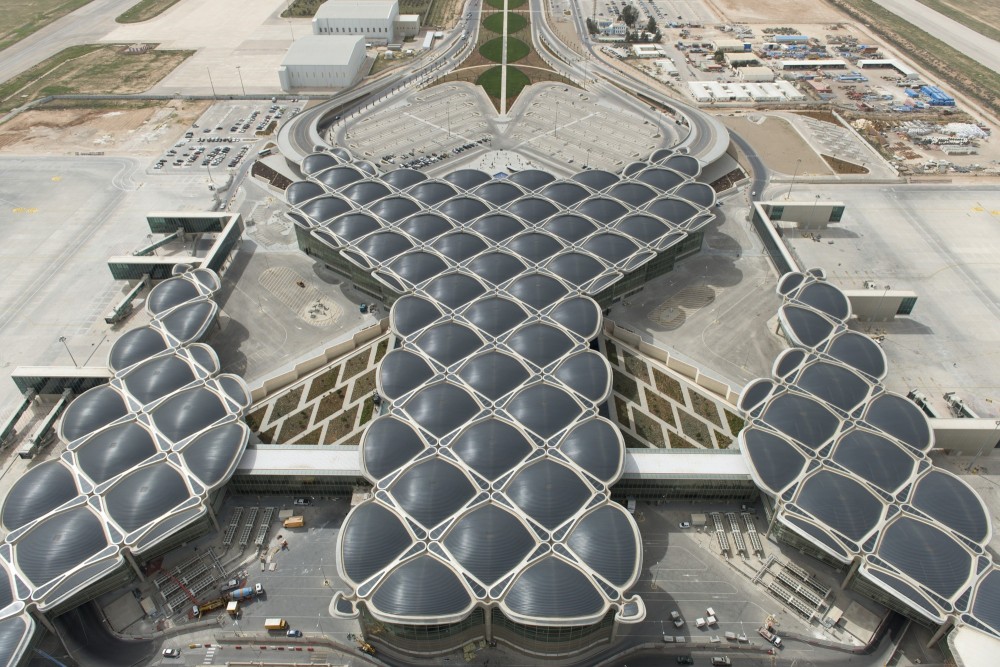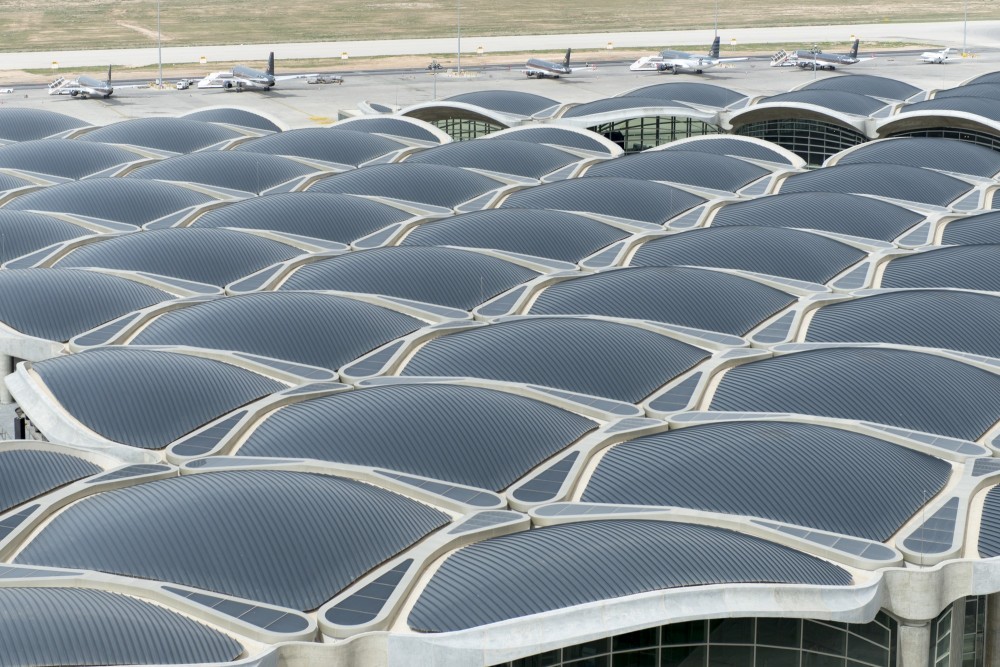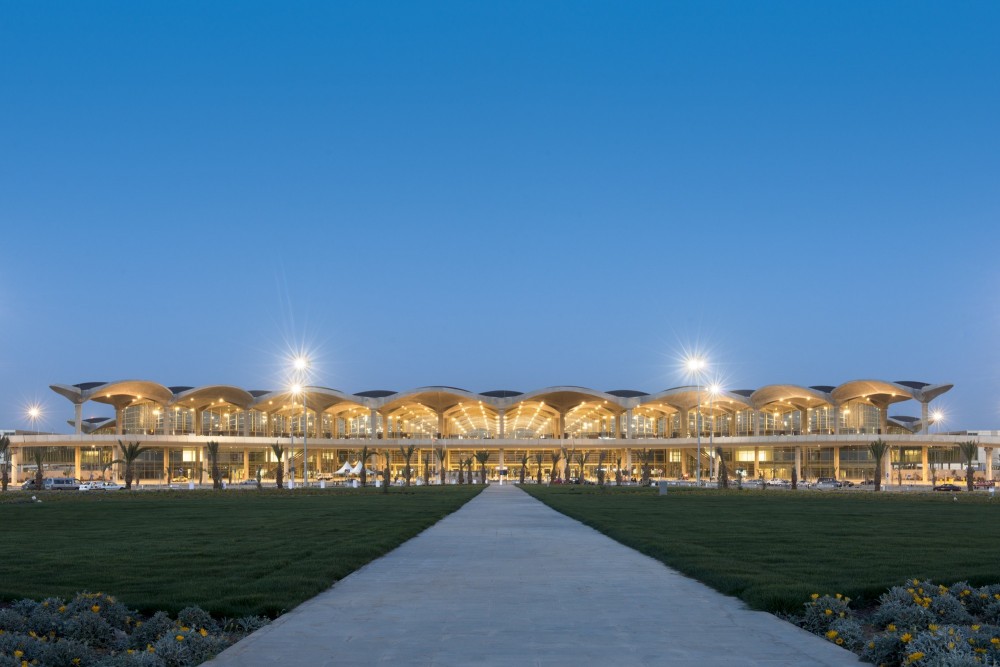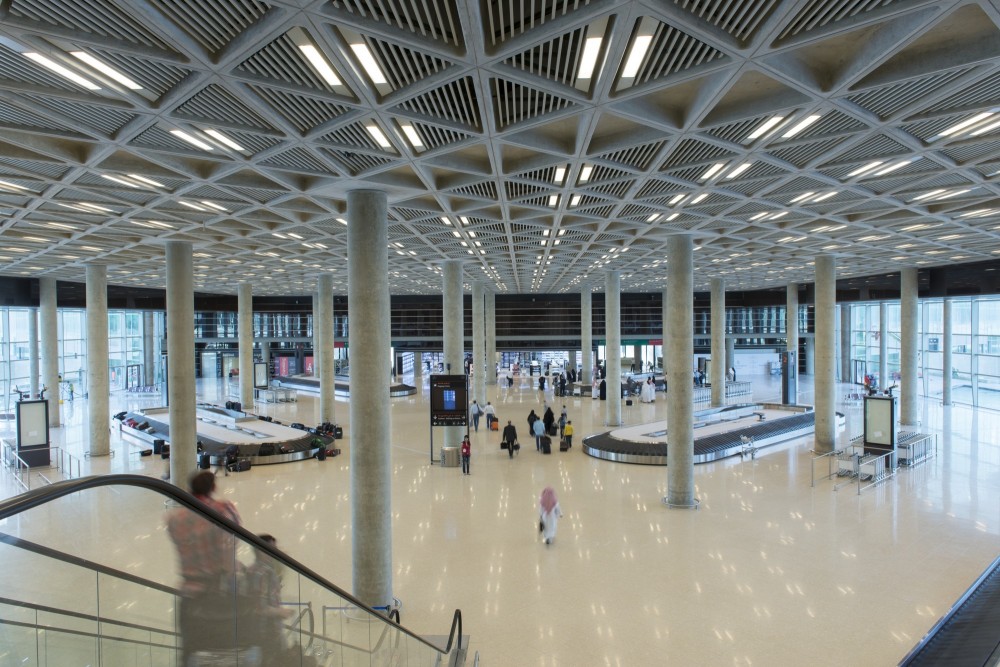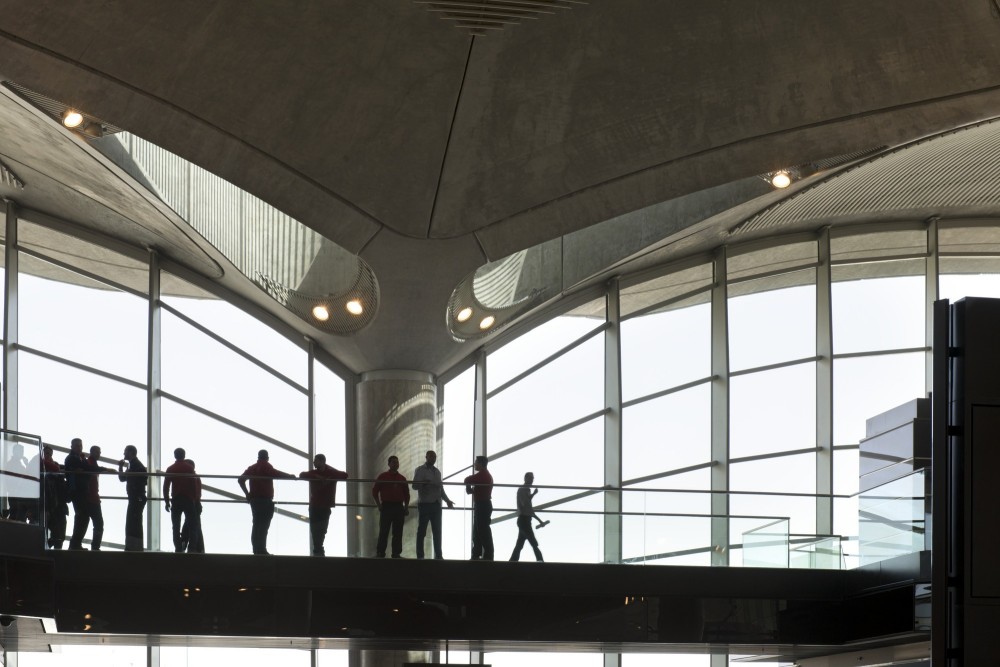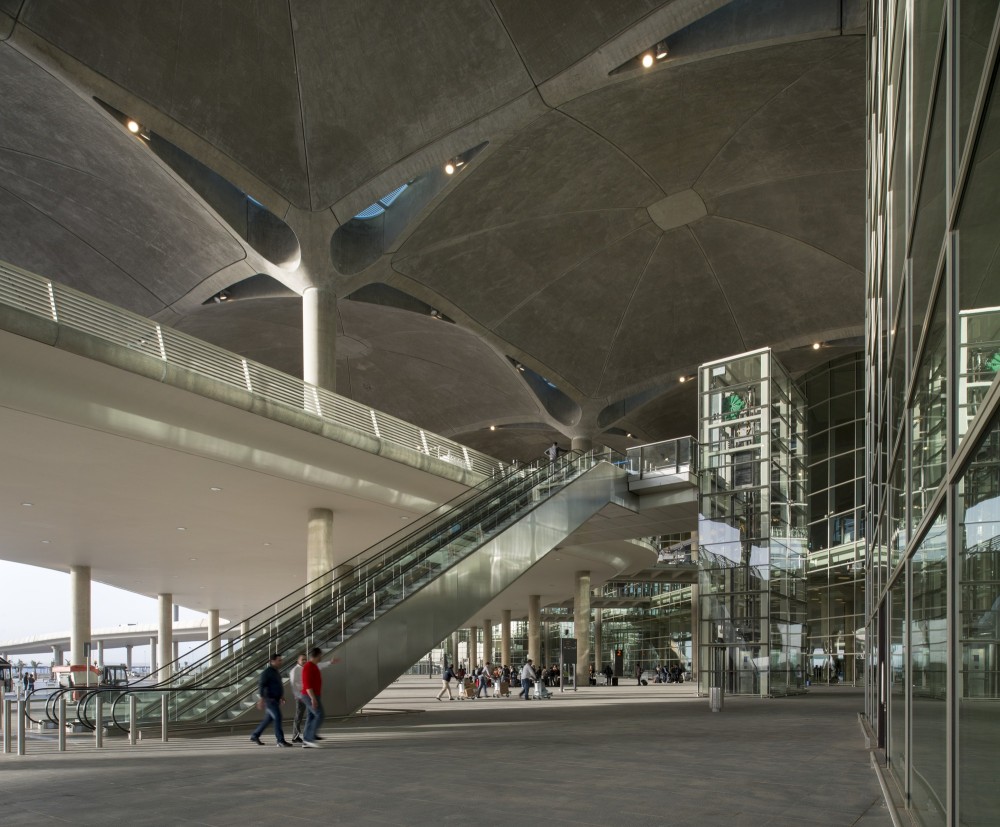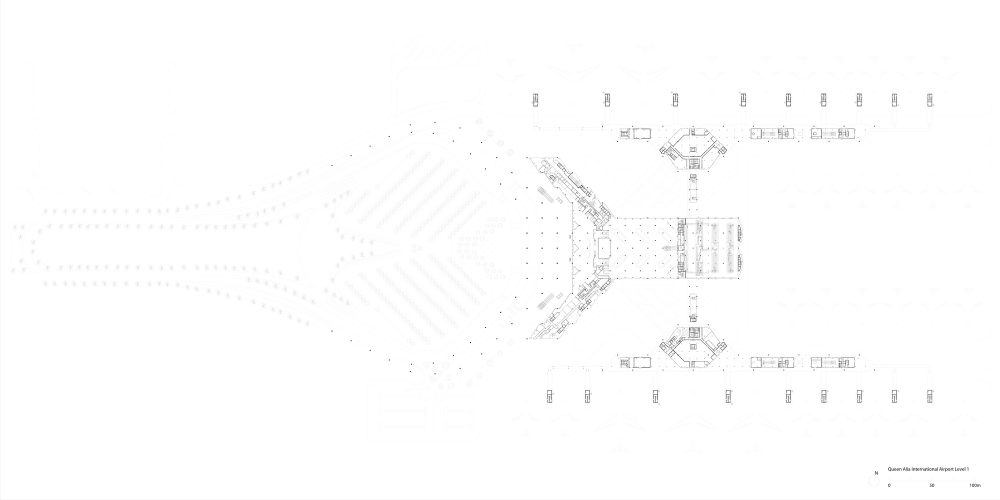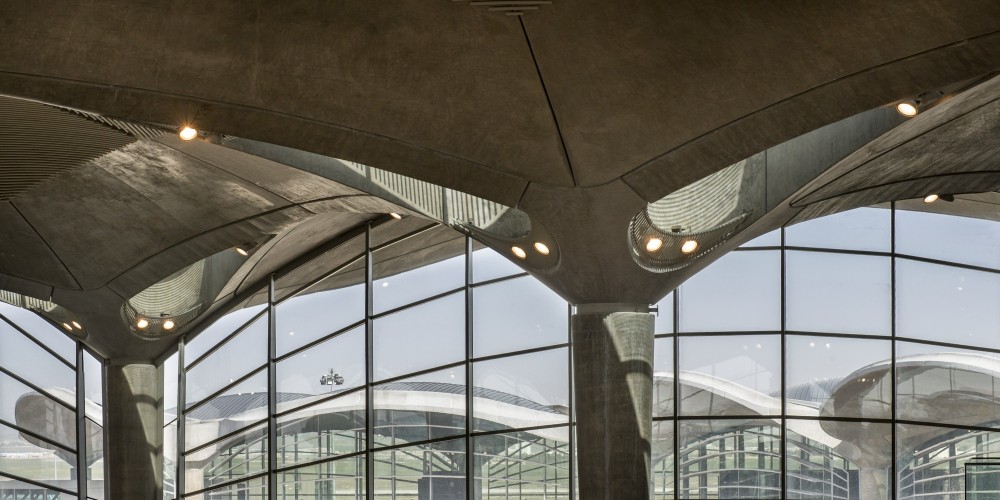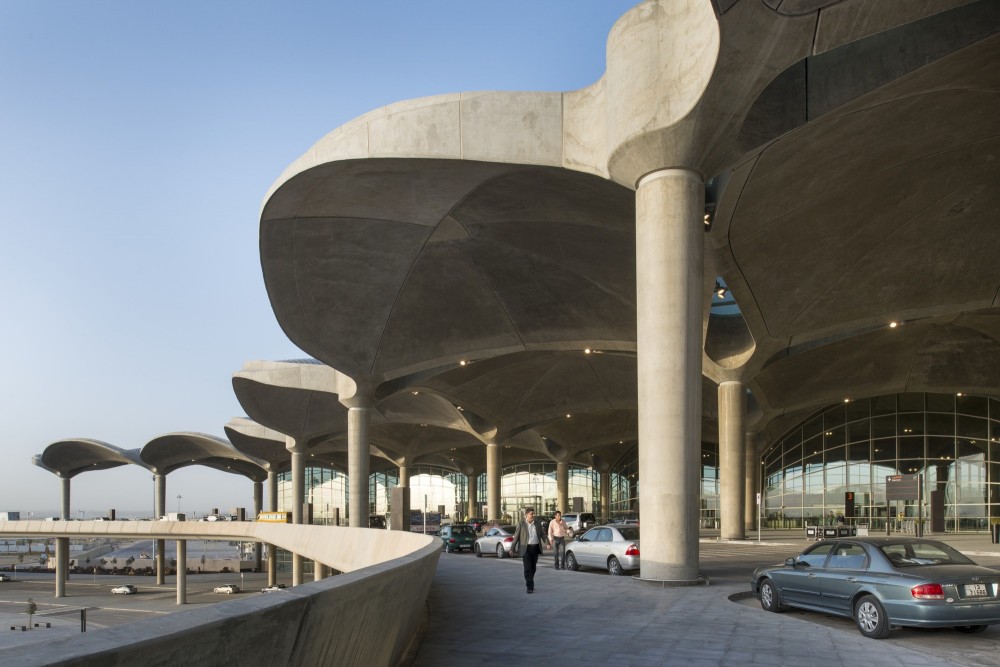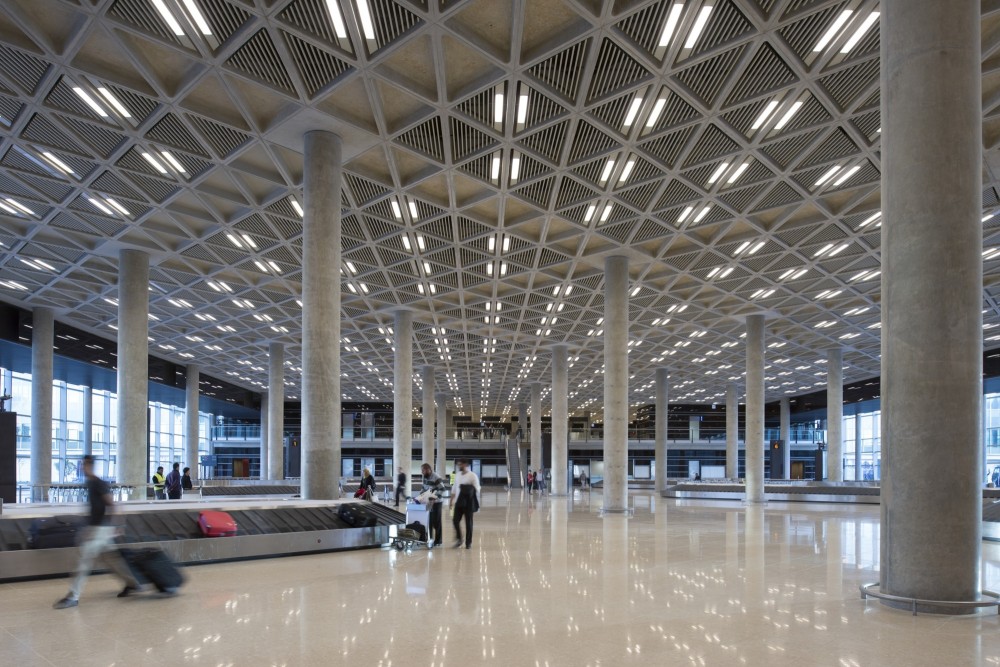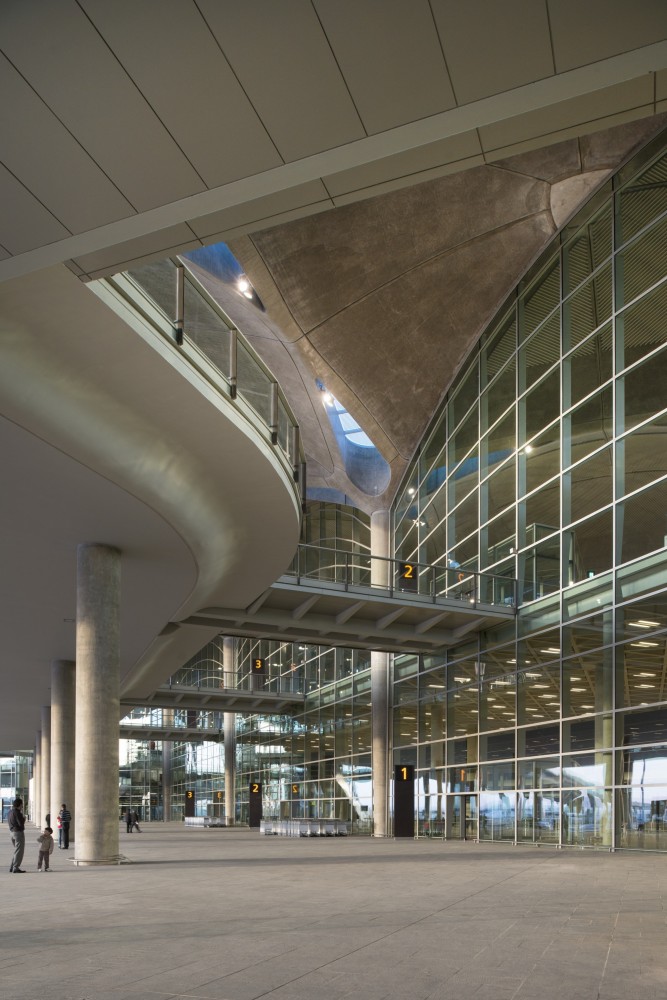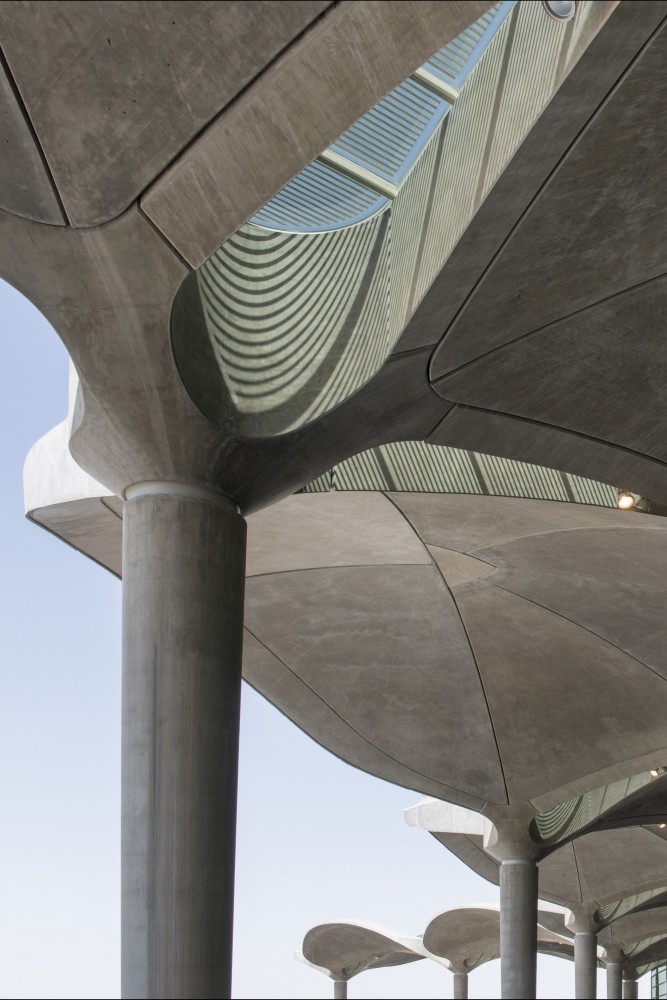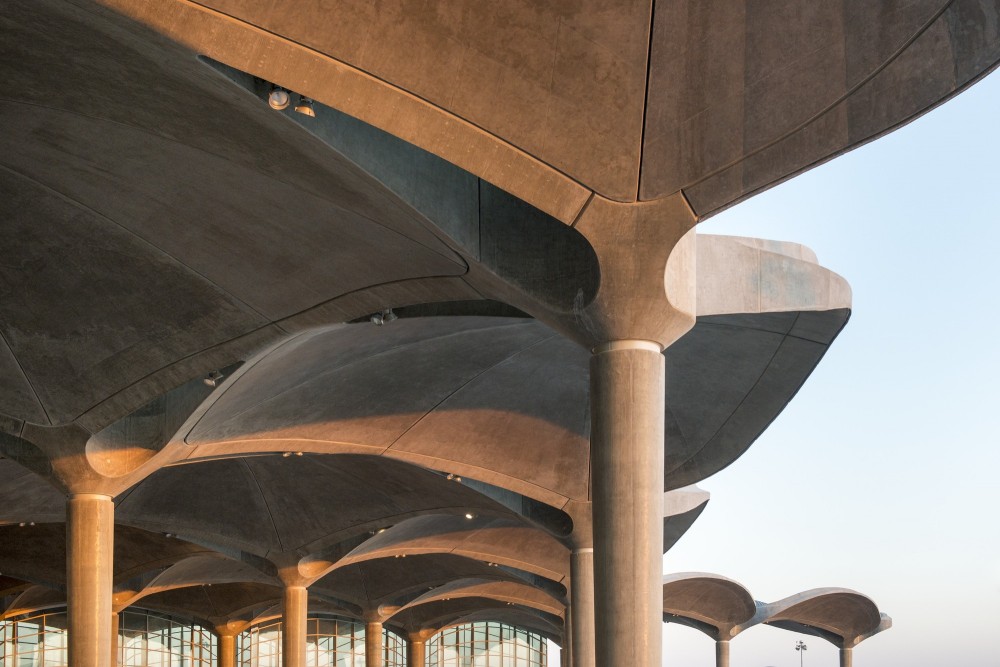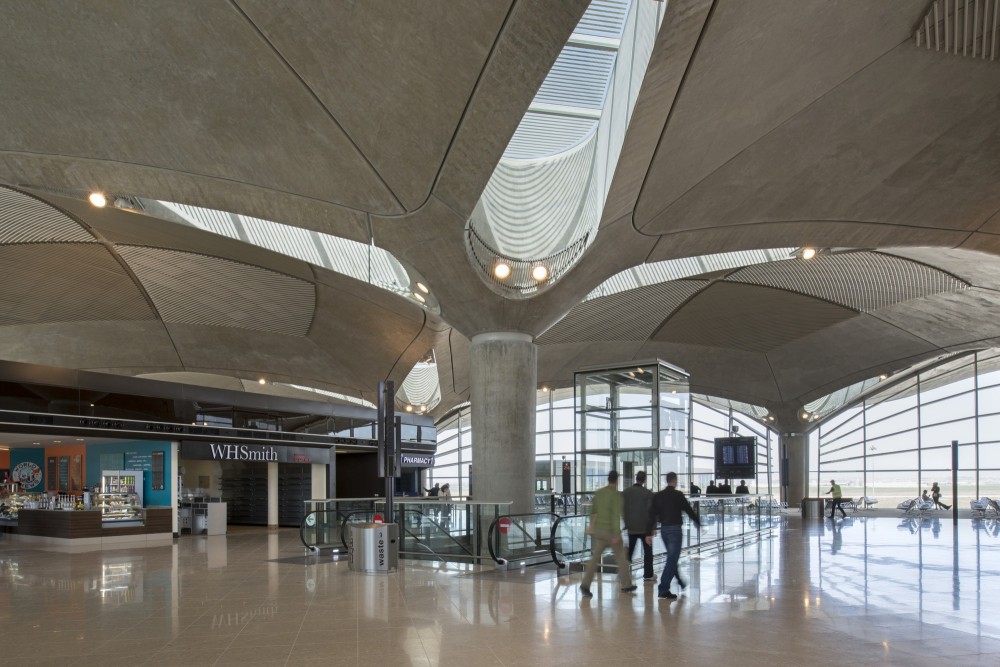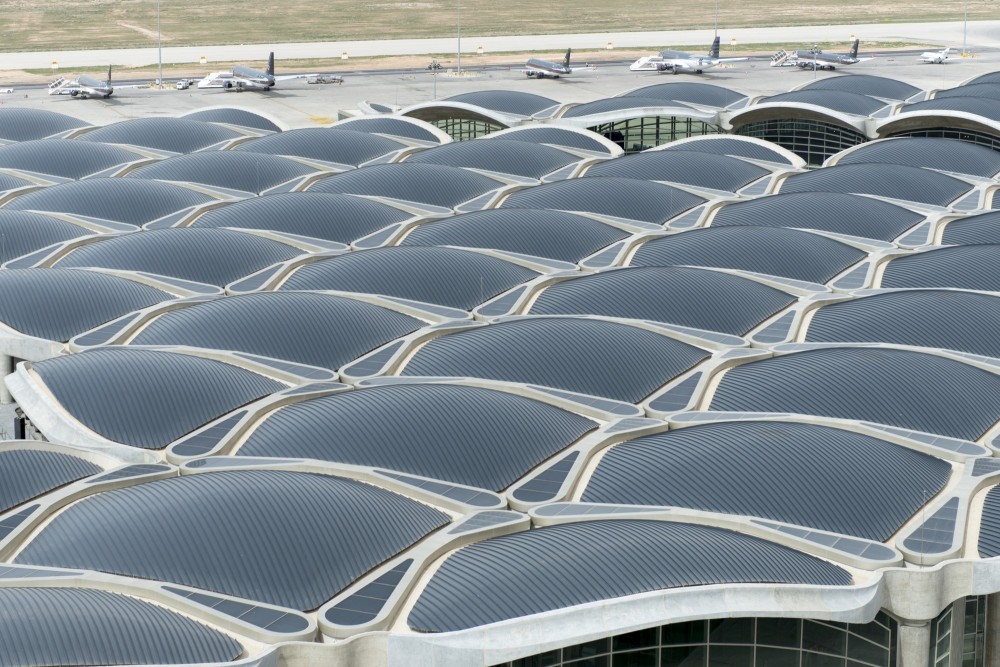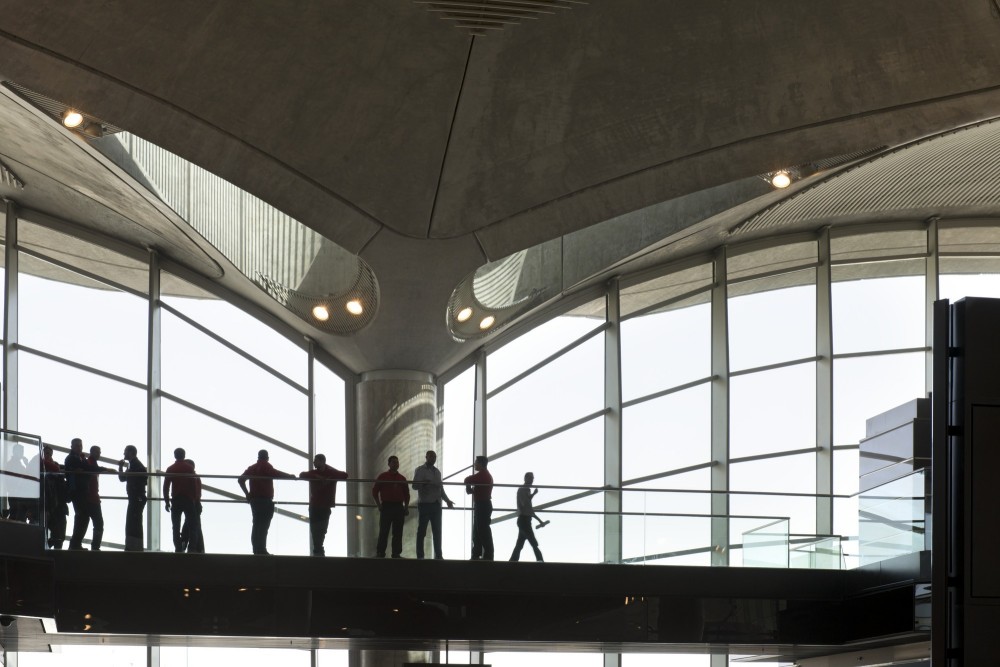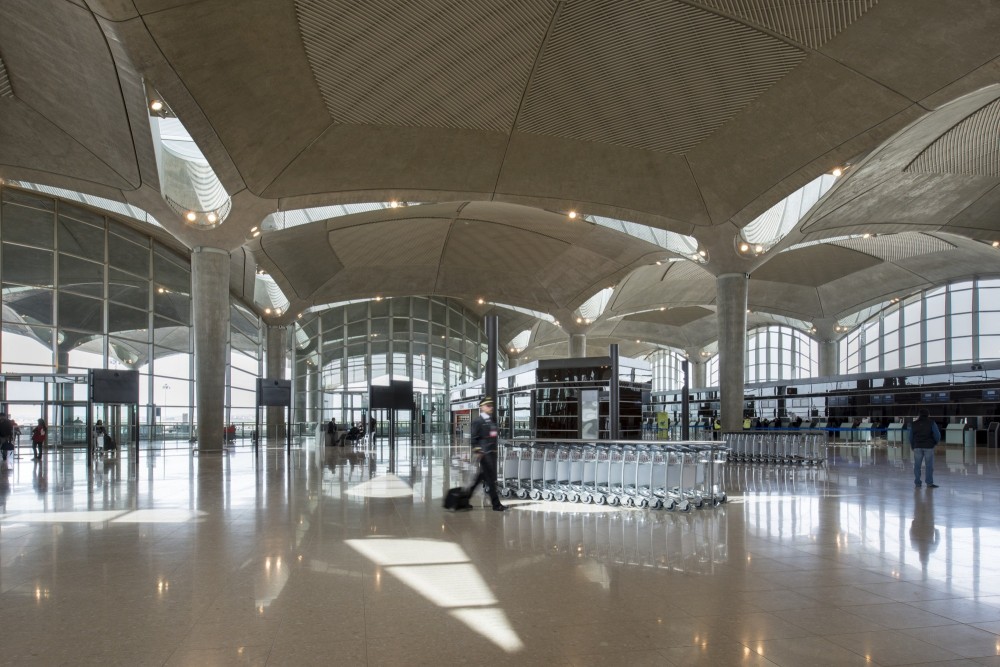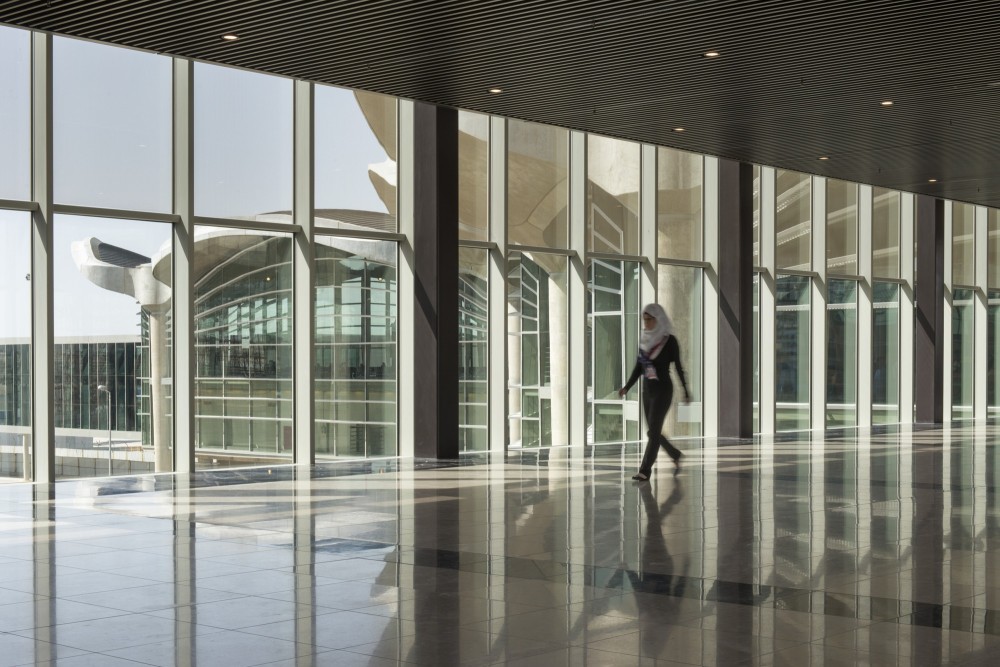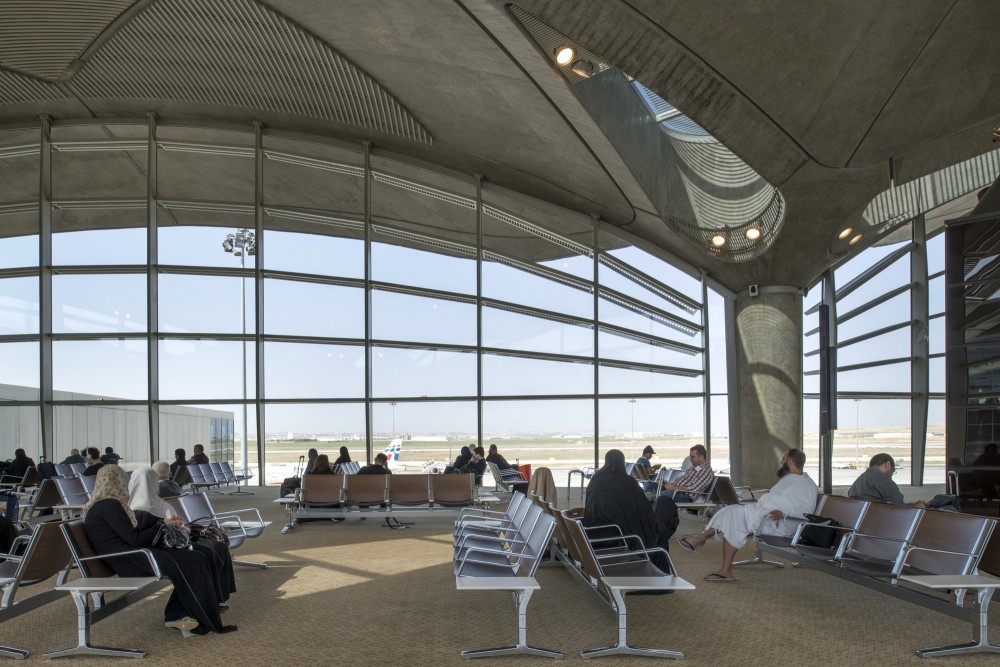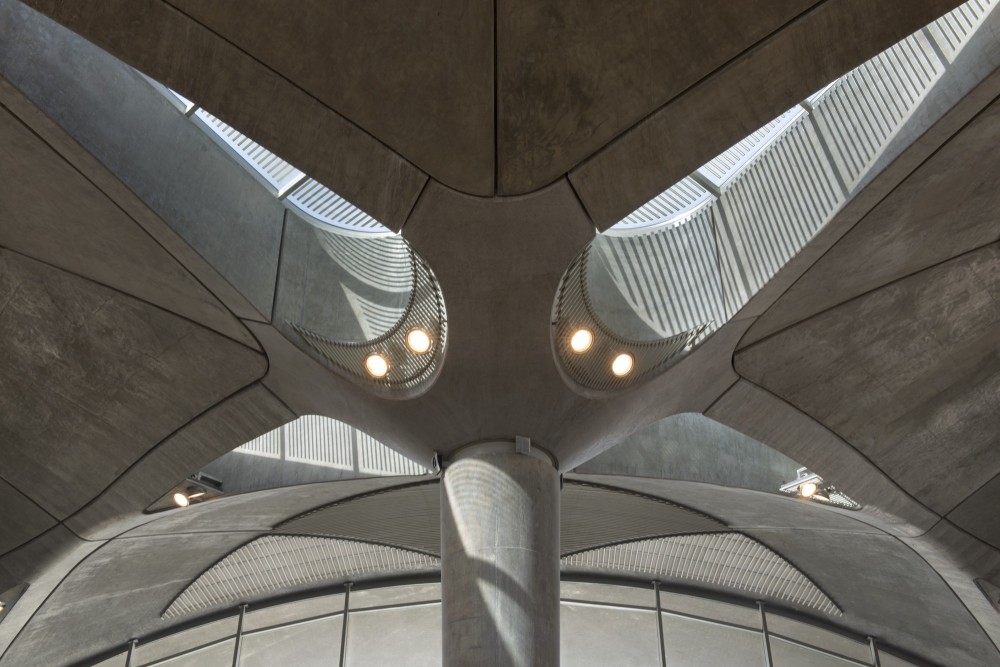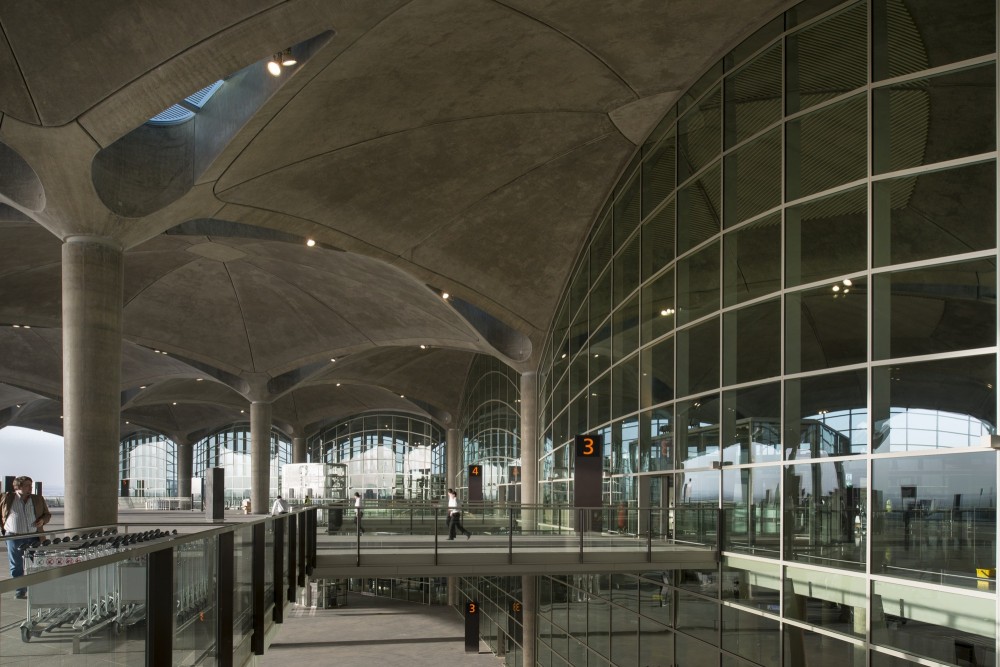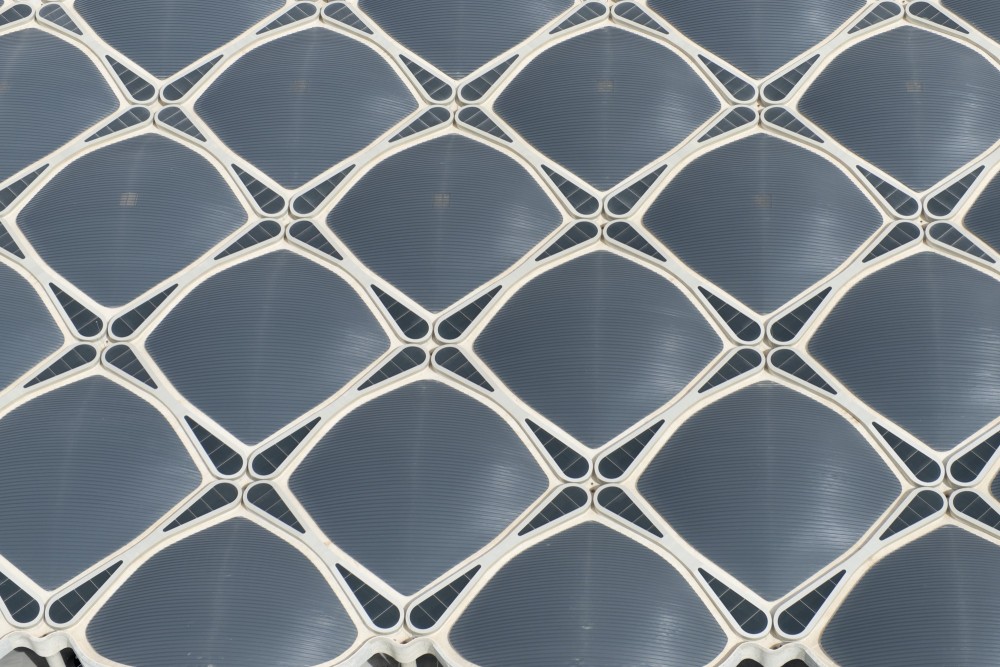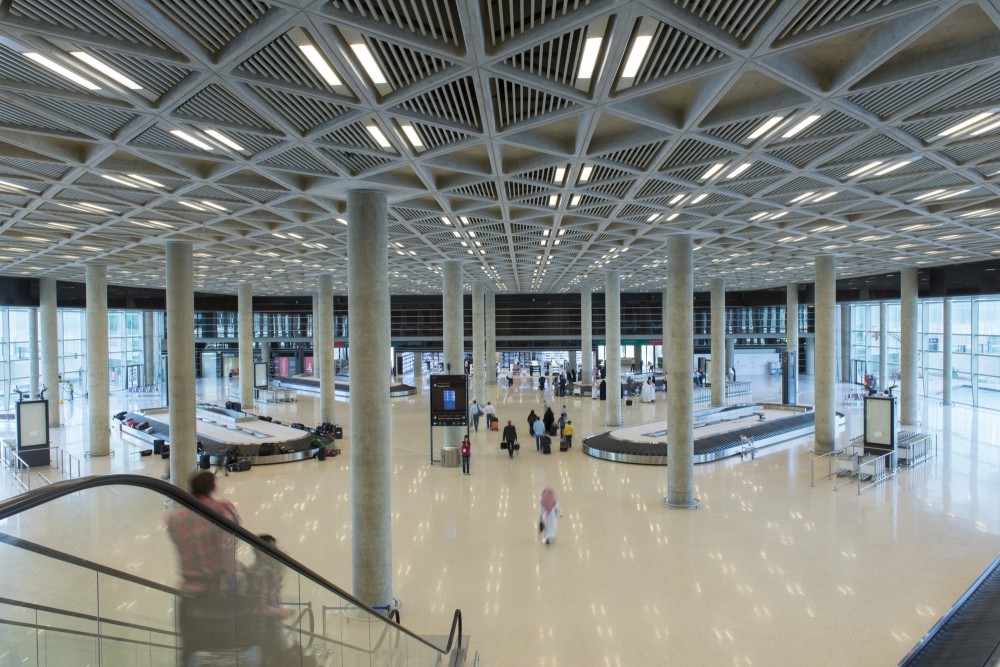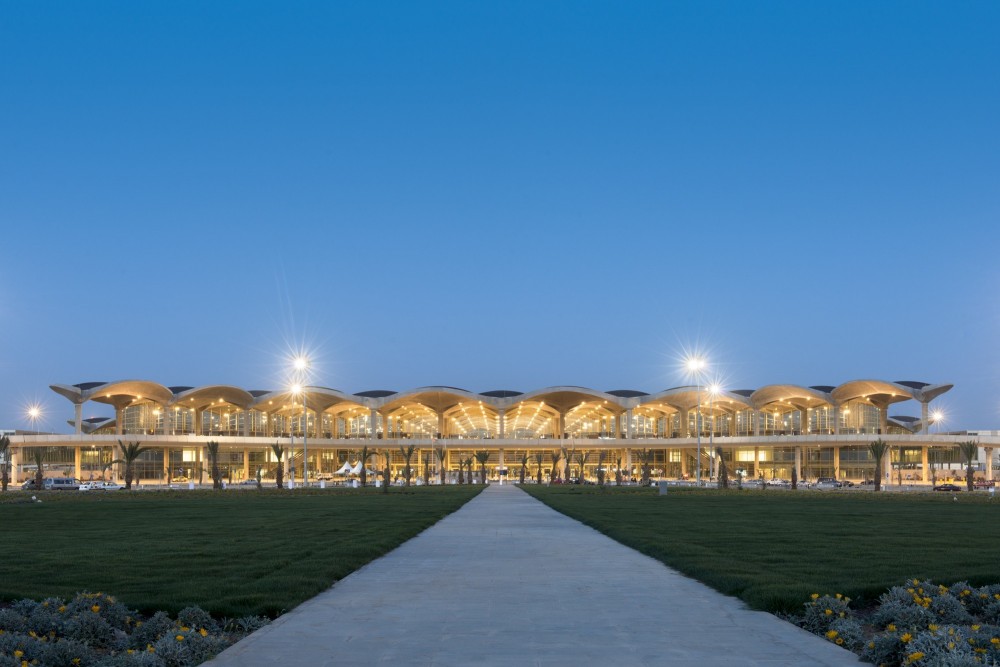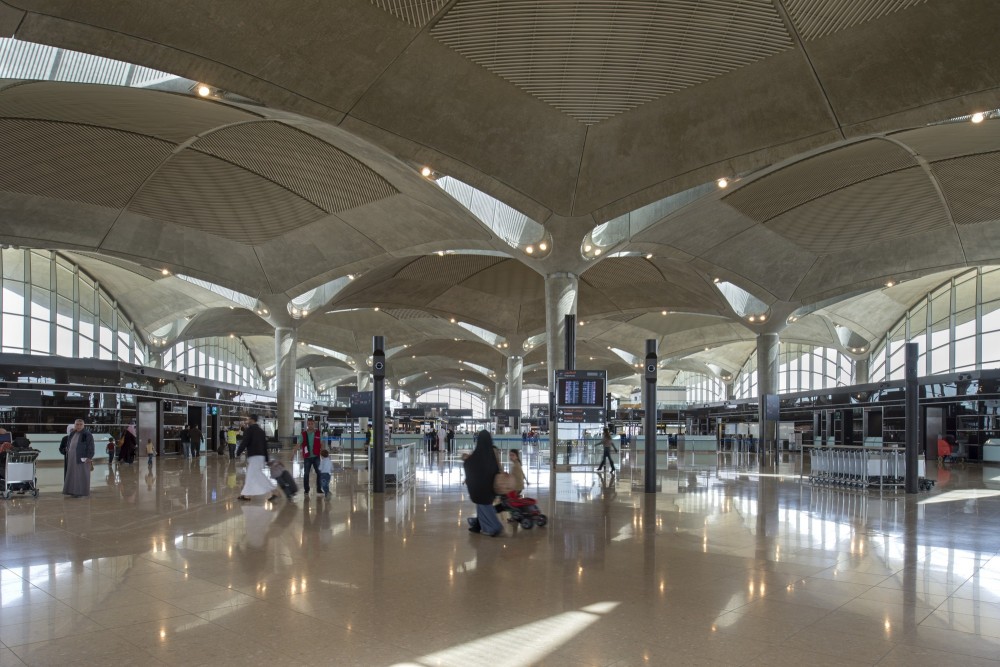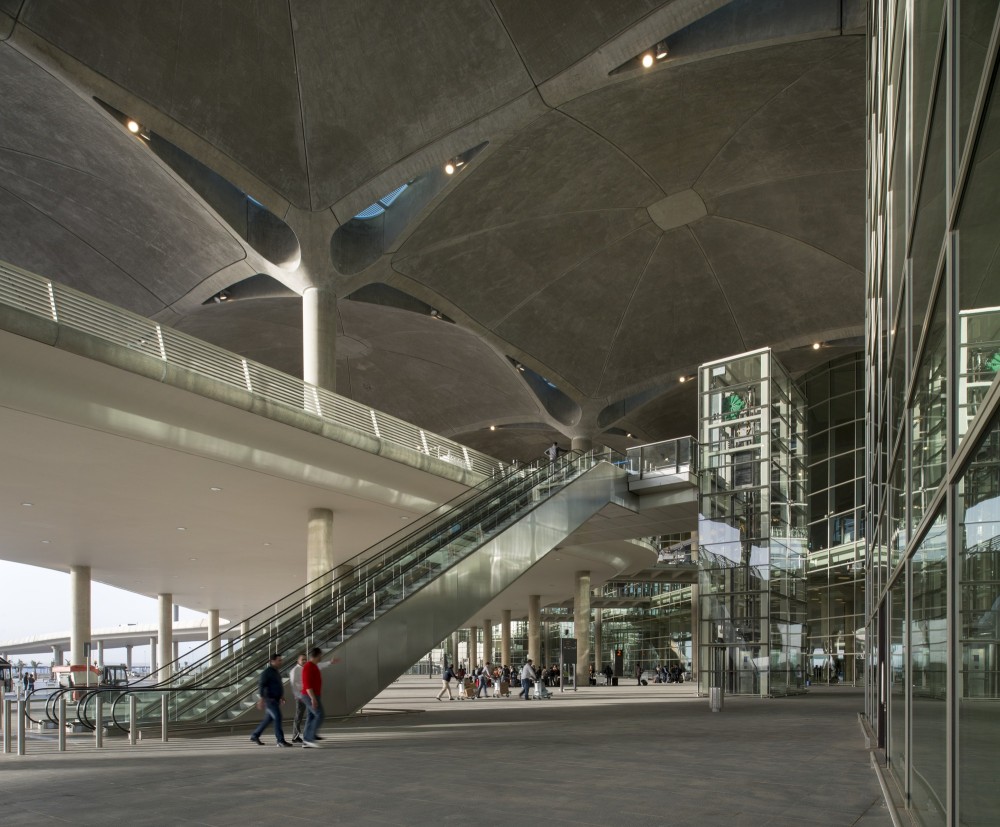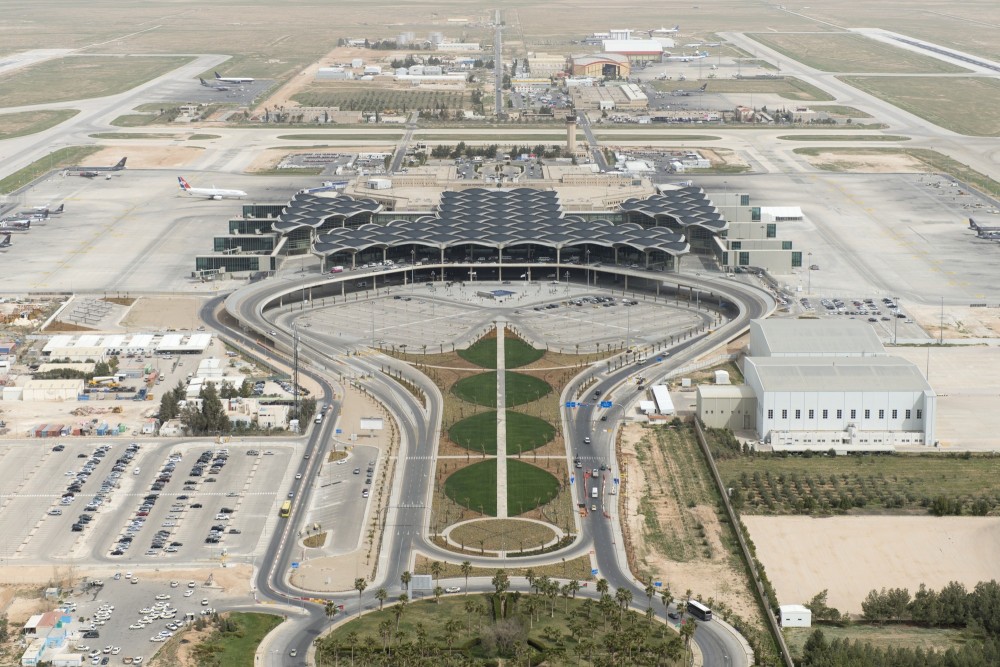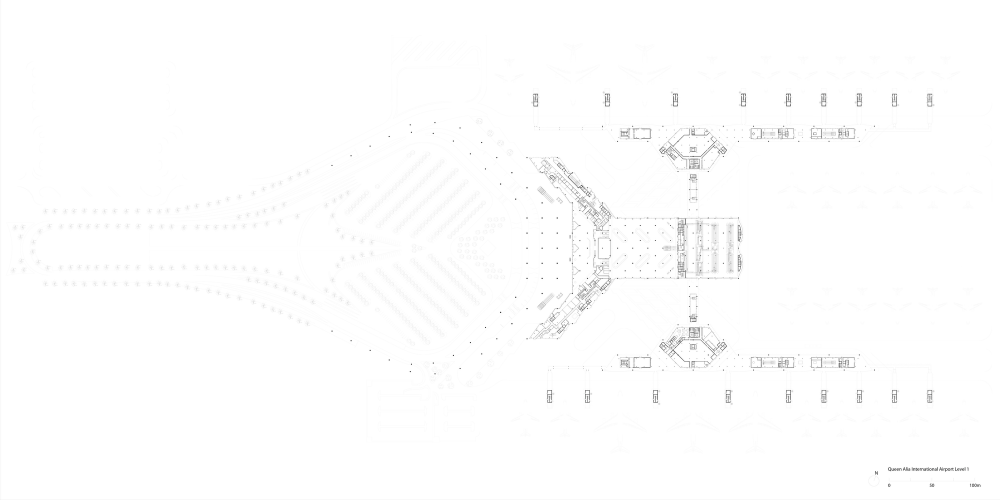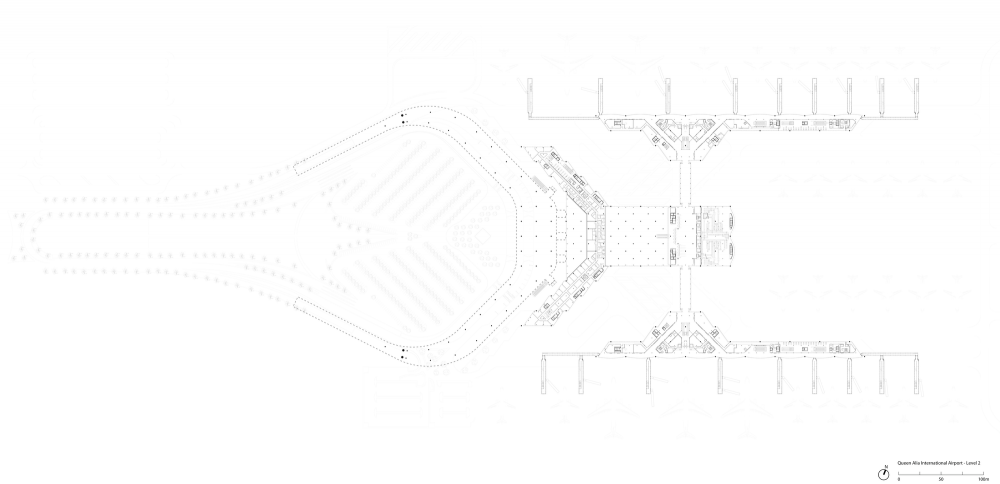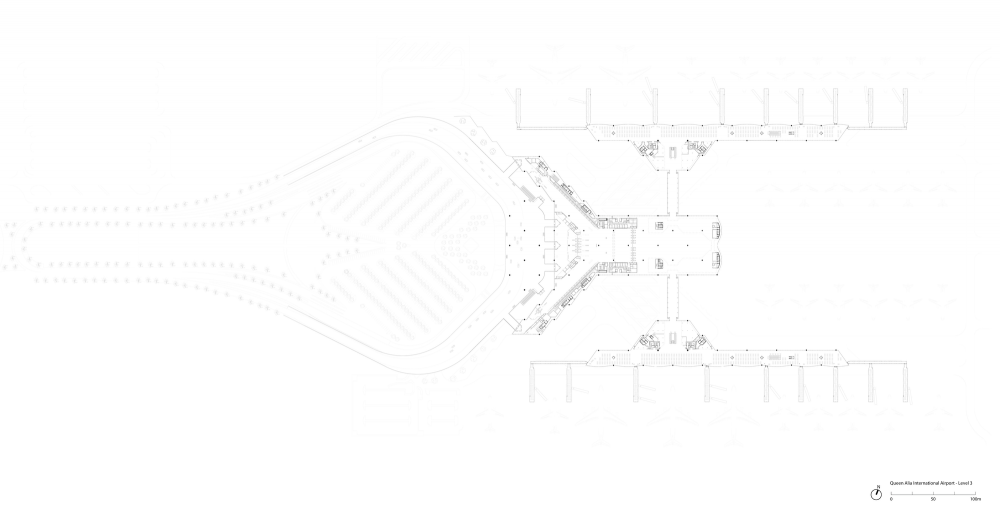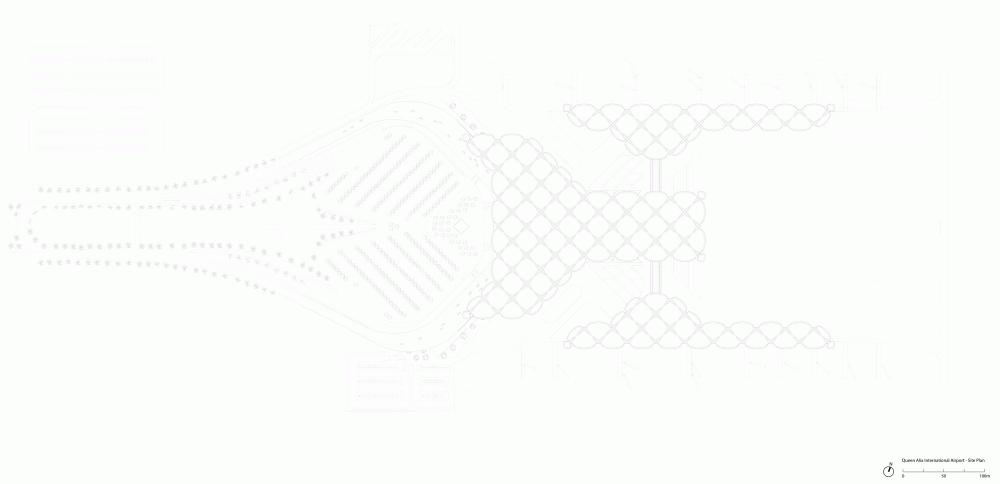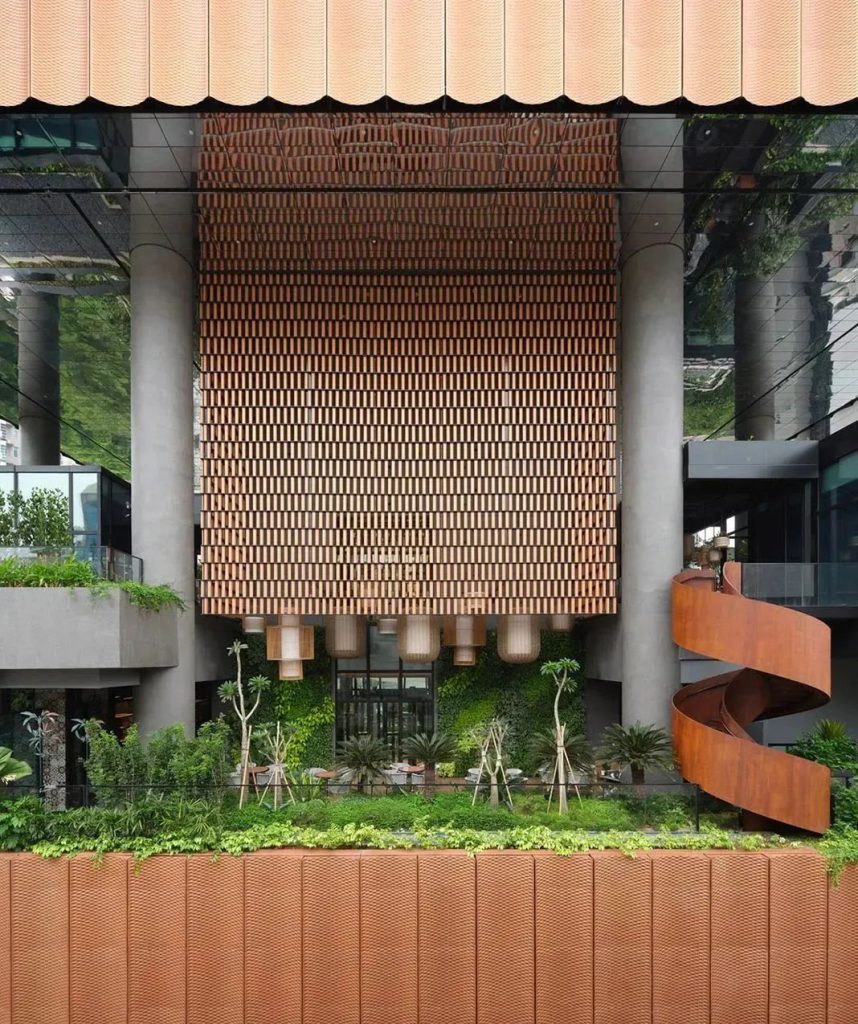受当地传统的启发,该机场采用了高效的被动能源设计方法,并以灵活的模块化方案为基础,以方便日后的扩建。新建筑保证了城市作为Levant地区主要枢纽的地位,并保证机场在未来的25年内每年扩容6%,旅客吞吐量从现在的350万增长到2030年的1200万。
考虑到安曼地区昼夜温差极大的气候条件,建筑大部分采用混凝土材料。混凝土具有很强的蓄热能力,可以起到被动的环境控制作用。棋盘拼花图案的天篷由一系列弧度较小的混凝土穹顶组成。穹顶向外延伸,将立面遮挡起来,每个穹顶就是一个施工模块。穹顶从支撑柱开始向外伸展,形态类似沙漠棕榈树的叶子。日光从柱连结处的组合梁处进入其下的广场。为了与叶脉的形象相呼应,每个裸露的拱腹都采用了以传统伊斯兰形式为基础的几何图案。
屋顶壳体复杂的几何形态和建造策略是建筑师同 Foster + Partners事务所内部的几何结构专家共同开发完成的。
登机口的两排墩座沿着中央建筑的两侧排列,墩座内容纳主要的手续办理区域、商店、休息处和餐厅。在这些体量的中央有一系列露天的庭院,这是该区域的本土建筑所具有的特征。这些庭院有助于航站楼实现环境可持续性策略:植被和树木可以过滤污染物,并可以在空气进入空气处理设备前对其进行预先处理,反射水池将散射的自然光折射到机场内部。
航站楼的四周由玻璃围合,使人们能够看到停机坪上的飞机,并有助于人们辨别方向。水平的百叶为立面遮挡直射光线,阻挡眩光。在靠近柱子的更加裸露的区域,百叶板条间的排列更加紧密。混凝土结构中加入了当地产的砂砾,以减少维护的要求,降低材料的蕴藏能源,同时与当地沙漠的天然色调相协调。
安曼是世界上人类持续居住的最古老的城市之一,机场的设计与当地的建筑相呼应,具有一种地域感。这一点在机场隆起的屋顶上体现得特别明显,从空中看,这些隆起就像是贝多因帐篷随风鼓动起来的黑色布料。建筑还参照了约旦人热情好客的传统。为了迎合家庭成员在机场聚集的习惯,前厅进行了扩容,用来设置带座椅和树荫的景观广场,人们临行前可以在这里跟家人道别,也可以在这里为到港的家人接风。
Foster + Partners事务所执行主管Mouzhan Majidi:
“阿利亚皇后国际机场是一项非常了不起的项目——它使安曼变身为区域中枢,并通过区域联动使整体经济有了显著的增长。新的航站楼是一座节能建筑,将会容纳阶段性增长的旅客,同时它也是约旦充满动感的地标建筑。从早期的概念设计阶段和运营商的选择到细部设计和现场施工,我们公司内部的许多专家都参与其中,包括建筑师、气候分析师、空间规划师和几何结构专家。我们与约旦同事和AIG团队的合作非常愉快。看到如今项目已经投入使用,我们也感到非常高兴。”
Architects: Foster + Partners
Location: Amman, Jordan
Collaborating Architect: Maisam – Dar Al-Omran JV
Year: 2013
Photographs: Nigel Young / Foster + Partners
Design + Build Main Contractor: Joannou & Paraskevaides (Overseas) Ltd, J&P-AVAX S.A.
Structural Engineer: Buro Happold
Quantity Surveyor: David Langdon
M+E Engineer: Buro Happold
Landscape Architect: Dar Al-Handasah
Lighting Engineer: World of Lights
Additional Consultants: NACO, ADPi, Zuhair Fayez Partnership, Rahe Kraft
Client: Airport International Group, The Hashemite Kingdom of Jordan Ministry of Trans, Joannou & Paraskevaides (Overseas) Ltd, J&P-AVAX S.A., Airport International Group P.S.C.
The airport has a highly efficient passive design, which has been inspired by local traditions, and is based on a flexible modular solution that allows for future expansion – the new building secures the city’s position as the main hub for the Levant region and allows the airport to grow by 6 per cent per annum for the next twenty-five years, increasing capacity from 3.5 million to 12 million passengers per annum by 2030.
In response to Amman’s climate, where summer temperatures vary markedly between day and night time, the building is constructed largely from concrete, the high thermal mass of the material providing passive environmental control. The tessellated roof canopy comprises a series of shallow concrete domes, which extend to shade the facades – each dome provided a modular unit for construction. The domes branch out from the supporting columns like the leaves of a desert palm and daylight floods the concourse through split beams at the column junctions. Echoing the veins of a leaf, a geometric pattern based on traditional Islamic forms is applied to each exposed soffit. The complex geometry of the roof shells and fabrication strategy was developed in conjunction with Foster + Partners in-house geometry specialists.
Two piers of departure gates run along either side of the central building, which contains the main processing areas and shops, lounges and restaurants. Between these volumes, open-air courtyards – a feature of vernacular architecture in the region – contribute to the terminal’s environmental strategy: the plants and trees help to filter pollution and pre-condition the air before it is drawn into the air handling system and reflecting pools bounce indirect natural light into the airport.
The terminal is glazed on all sides to allow views of the aircraft on the apron and to aid orientation. Horizontal louvres shade the facades from direct sunlight – to eliminate glare, the louvres become concentrated in more exposed areas close to the columns. The concrete structure incorporates local gravel to reduce maintenance requirements and the embodied energy of the material, and to harmonise with the natural shades of local sand.
Amman is one of the oldest continually inhabited cities in the world – the airport’s design resonates with a sense of place and local architecture, particularly in the domed roof, which from the air echoes the black flowing fabric of a Bedouin tent. There are also references to the Jordanian tradition of hospitality – in celebration of the custom for family groups to congregate at the airport, the forecourt has been enlarged to create a landscaped plaza with seating, shaded by trees, where people can gather to bid farewell or welcome returning travellers.
Mouzhan Majidi, Chief Executive, Foster + Partners:
“Queen Alia International Airport has been an extraordinary project – it has transformed Amman into a niche hub, while offering critical growth for the wider economy through regional links. The new terminal building is energy efficient, will accommodate phased expansion and provides a dynamic symbol for Jordan. Our early involvement from the conceptual design stage, supporting the selection of operators, and through detailed design and work on site has involved many of our specialist in-house teams, from architects to climate analysts, space planners and geometry specialists. It has been a pleasure to work with our Jordanian colleagues and the team at AIG, and it is great to see the results of this work come to life today”
项目来源: Foster + Partners
